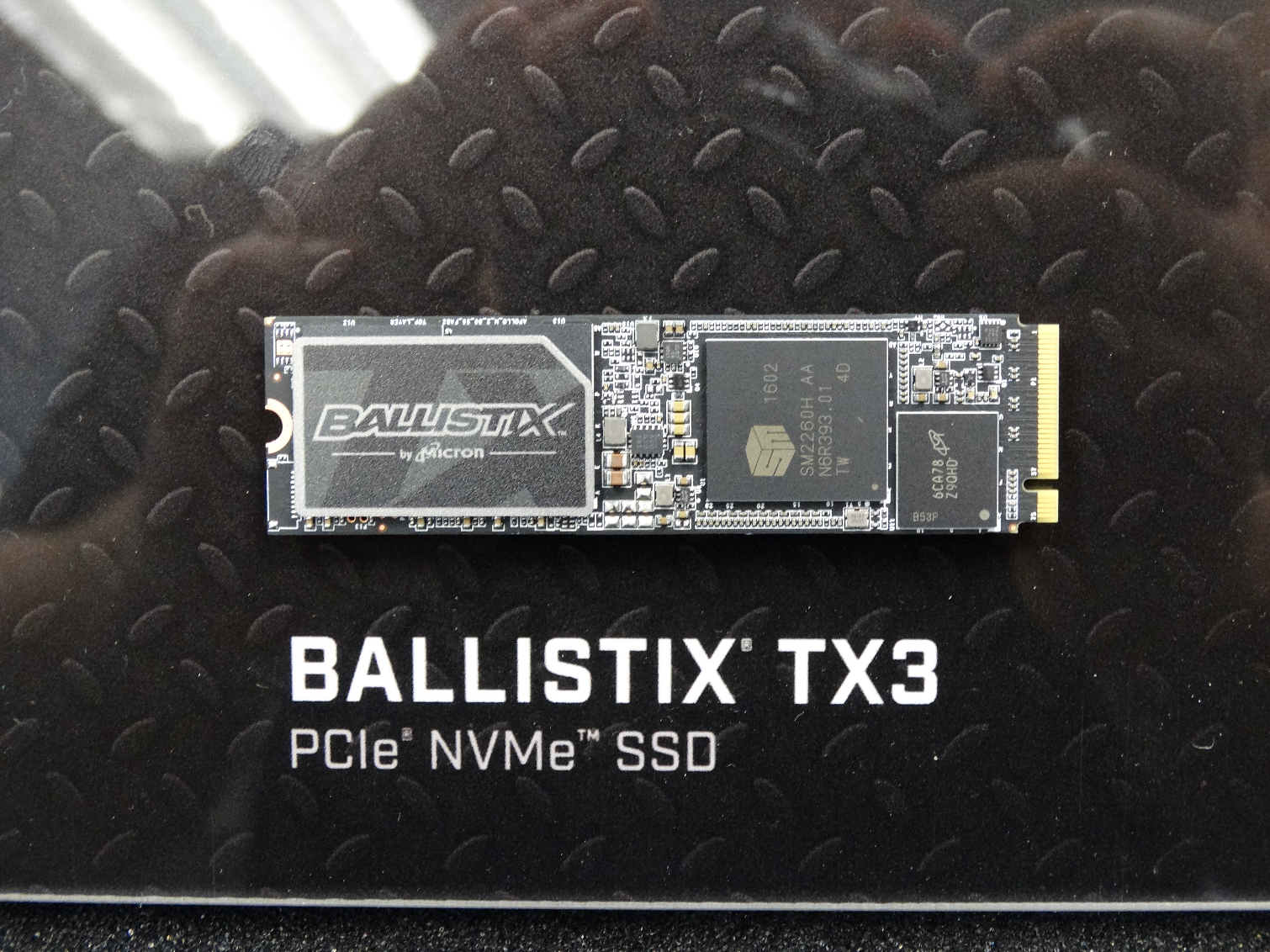Official: Crucial Cancels Ballistix TX3 SSD
“Based on prioritization of company resources and investments, the Ballistix TX3 PCIe NVMe SSD program has been cancelled. We are, however, continuing to explore potential opportunities for future gaming products and will provide an update as new plans are formalized." - Crucial Statement.
Parent company Micron couldn't be any more vague in explaining why the TX3 NVMe 8-channel SSD will not make it to market. At Computex 2016, company representatives were upbeat about the new gaming-focused brand and the first NVMe solution to come under the Ballistix Gaming umbrella.
After Computex, Micron announced a 7.5% workforce reduction, impacting 2,400 workers. It's difficult to build a new brand with a hiring freeze and layoffs underway.
The TX3 would have been the first product to ship with the new IMFT 3D MLC NAND flash that sports 256Gbit per die, which is a 2x density increase over existing 16nm planar MLC. In June several third-party SSD manufacturers stated that 3D MLC from IMFT was difficult to secure, but in the last two weeks we've seen more reference designs with the technology. Some of those early reference designs are currently under the performance microscope in our test lab.
On paper, the TX3 trails other NVMe-based products shipping today, such as the Samsung 950 Pro, Intel SSD 750 series and Zotac SONIX (Phison PS5007-E7). Under real-world workloads we found the TX3 closes the wide gap left open from Crucial-branded SATA-based products, but the TX3 still trails all other consumer-facing NVMe SSDs shipping today in the real-world applications tests we've performed.
More troubling is Micron's reluctance to give firm details of the 2100 client SSD announced May 31. We inquired about the 2100 hoping to get a firm green or red answer but found a bright yellow reply that indicates the client product may eventually suffer the same fate as the Ballistix TX3.
After testing four products with Micron 32-layer TLC and a partial test on a product with 3D MLC (Phison S11 DRAM-Less), it appears the flash falls short of competing with Samsung's 3D NAND in performance. It's as if Micron aimed a bow at the target but forgot to account for the affect of gravity on the arrow. This is very disturbing since 32-layer silicon is just the first step, the foundation, with a massive skyscraper planned to sit above it (if you'll excuse our mixed metaphors).
Get Tom's Hardware's best news and in-depth reviews, straight to your inbox.
SSD controllers only guide the path. They can't make up for latency at the memory level without adding channels to address more NAND for increased parallel operations. We haven't seen a 10-channel controller since 2011 when Intel released the 320 Series. Making one now would be counter productive and getting such a beast to fit in the constraints of M.2 2280 is impossible.

Chris Ramseyer was a senior contributing editor for Tom's Hardware. He tested and reviewed consumer storage.
